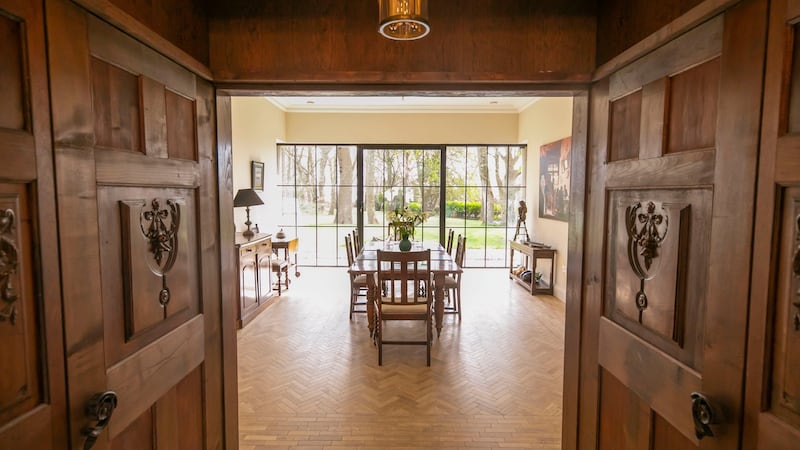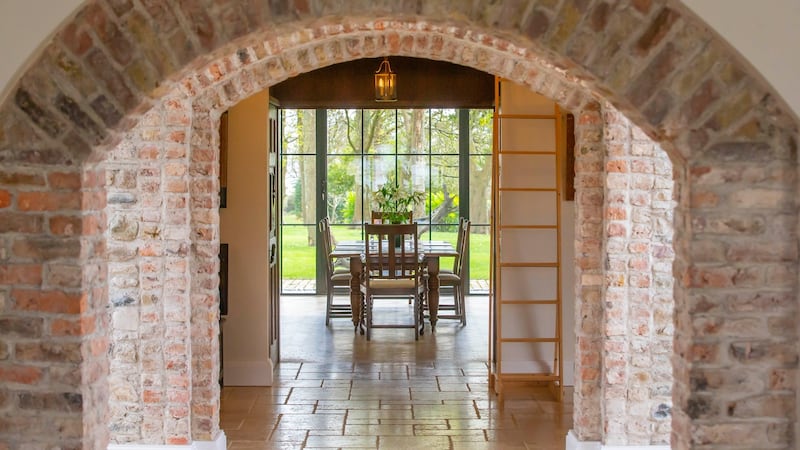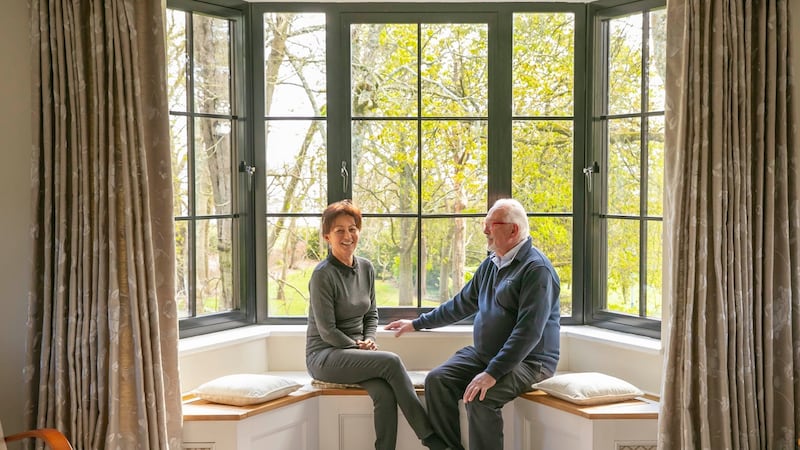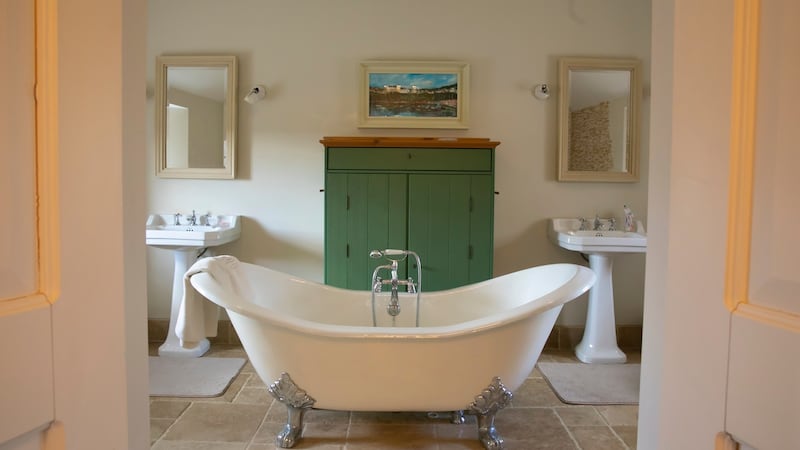At a former farmyard, tucked away off a quiet country road that skirts the coastline, a decade-long undertaking has been quietly tipping away under the radar for Waterford couple Nan Ferrari and John Corrigan.
The idea started even more than 10 years ago, when they wanted to downsize from their previous home - the large Georgian country house they had lived in for the previous 27 years. They started to look at various properties around the country, before a notion struck them - perhaps they didn’t need to look so far.
They sold the Georgian house, moved into their adjoining farmyard, and started into the renovation and conversion of the outbuildings into a home.


Like all of these labours of love, the work has been never-ending - a commitment demanding rolled-up-sleeves and countless hours in front of computer screens and books, meticulously poring through conservation and building advice.
What was previously a hen shed is now a kitchen. Former stables form the downstairs bedrooms. The forge of yesteryear is now a dining room. Stone arches that used to lead from the public lane onto a carriage-passage to the main house, form the central axis of the home and create a striking visual feature that carries the eye from the main arch at one gable end, through the generously proportioned sitting room which is punctuated with a series of rounded arches leading across the hallway, on through the double-doors which lead into the dining room, and out onto a view of the garden and the sea.
Following on from a busy career in healthcare, Corrigan has been putting his previous work experience to unlikely use, as the retired orthopaedic surgeon and his psychiatrist wife tackle the major project.
The couple wants to do it right. And Corrigan, in particular, wants to do it himself. As a former medic with no training in carpentry, stonework or some of the other specialist areas the project encompasses, this is no easy matter.


Take the hinge challenge, for example.
Corrigan had been searching online and locally for an accessory to meet the needs of a particular DIY task he was tackling. He wanted a set of double-doors he had upcycled from furniture the couple picked up in France, to move on hidden hinges. He finally gave up on regular outlets and dug out some remnants from his previous work life which he put to ingenious use.
“There were always bits of hip replacements being thrown out, leftover from surgery. So I used a couple of them, and sat them on an axis in the middle of the door.”
The upcycled furniture also gave him the makings of the dumb waiter he’s currently making, which links the dining room through to the kitchen and will have a lift mechanism up to the couples’ bedroom.
"We call it the Tabernacle to Food," says Ferrari, who grew up in the Seychelles in a "foodie" family. She points out some of the other food-related innovations Corrigan has installed in the kitchen.


“He built all the fitted kitchen units himself, even used one of our trees that had fallen in the storms. It had honey-fungus, which forms a lovely pattern for the worktop.”
There are various cleverly concealed gadgets and innovative openings and recesses, including a set of drawers that glides from both sides of a unit, allowing the couple to load crockery on one side near the dishwasher, and slide open on the other side to set the table.
The couple have used traditional methods throughout, but also incorporate modern touches. Large, contemporary windows and double-doors open in every direction, bathing the property in light, throughout. The views are a feature of the house that give Ferrari particular pleasure.
“Everywhere you stand, you have a view. There’s so much glass you can look out from every angle, but it’s not a cold space. I think all the stone gives it a natural and warm feel. In our bedroom, when the sun comes up, it’s amazing. And the moon reflected over the sea. You can’t see it in the summer because leaves are out on the trees, but in the winter it’s so beautiful.”
The dedication to a DIY approach has been a help and a hindrance. The length of the ongoing project can be exasperating at times.
“It will never, ever be finished,” says Ferrari, with good humour, as her husband goes on to explain the reasoning behind their dedication to the work. He speaks of the “throwaway” nature of modern builds, with houses having a limited life expectancy compared with homes and buildings of the past.
“This had already stood for 200 years. We felt it could stand for another 200 years if we did it right.”


The benefits of taking such a painstaking approach are widely on display. Meticulous planning and work has gone into the stonework, with traditional methods of drainage and damp-proofing being adhered to, which Corrigan is proud of.
“When the Victorian era came in they introduced pipes and whatever, and older methods were forgotten. Some of the Georgian building methods were just incredible.”
Another benefit to taking such a long-term approach has been the time given to sourcing items from antique shops, salvage yards and the like. Light fittings, furniture and other items have been collected over time and have not, say the couple, cost a fortune; though a particularly lovely feature - the ceiling-height sandstone fireplace they commissioned in France, was a special “must have” investment.
The building-height floating spiral staircase is another show-stealer that has benefitted from painstaking attention-to-detail. Thinking into the future, the surgeon-come-DIY-maestro wanted a banister that would be easy to grip with ageing hands.
He set to work, hand-crafting one to the ideal dimensions (the circumference of a wrist), the result of which is a very beautifully proportioned banister which is topped with a cast of John’s own fist - a fitting homage to the hands-on efforts that will continue for the foreseeable, in this special “forever” home.


















